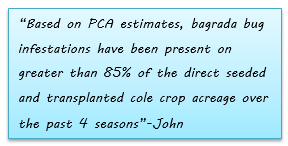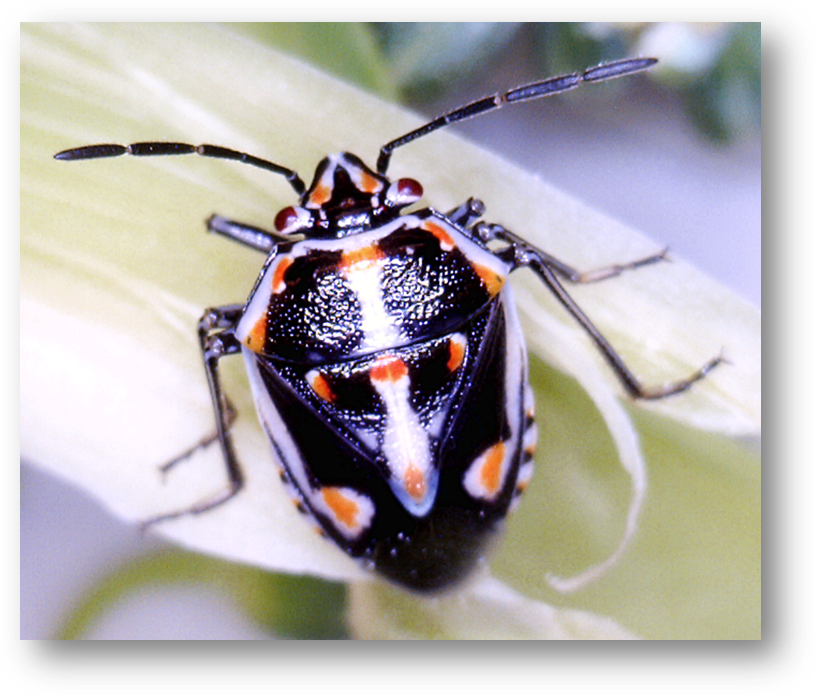
|
|
|
|

|
|||
|
|
|||
|
We recently conducted our annual bagrada bug survey of growers and PCAs to estimate
the impact of this new pest on desert cole crops. The bagrada bug, Bagrada hilaris,
first occurred on desert cole crops at damaging levels in the fall on 2010, and
since that initial outbreak it is clear that the invasive stinkbug has become an
established pest of desert cole crops. In 2013, widespread infestations were reported
throughout the desert growing area from September to well into November, comparable
to the infestations growers experienced in the previous three years. Stand losses
and yield/quality reductions to broccoli, cauliflower, cabbage and other Brassica
crops were considered economically significant in most growing areas, and were reported
at levels comparable to 2010. Insecticide usage to control this pest remains high,
and consists mainly of pyrethroid chemigations and foliar sprays. In an attempt
to document these impacts, we have surveyed produce growers and PCAs from Yuma,


Bagrada Bug Adult (picture: J.Palumbo)

Click picture to listen to John’s update
To contact John Palumbo go to: jpalumbo@ag.arizona.edu |
|||
| Back | |||
|
For questions or comments on any of the topics please contact Marco Pena at the Yuma Agricultural Center.
|
|||
|
Home |
Cotton | Veggies |
Forages | Grains
| Citrus |
Crop x Crop Insects | Diseases| Weeds | Pesticides | Economics | News | Weather | Research | Photos | Contacts | General Info. Copyright © 2001 University of Arizona, College of Agriculture and Life Sciences Webmaster: Al Fournier (acis@ag.arizona.edu) |
|||
